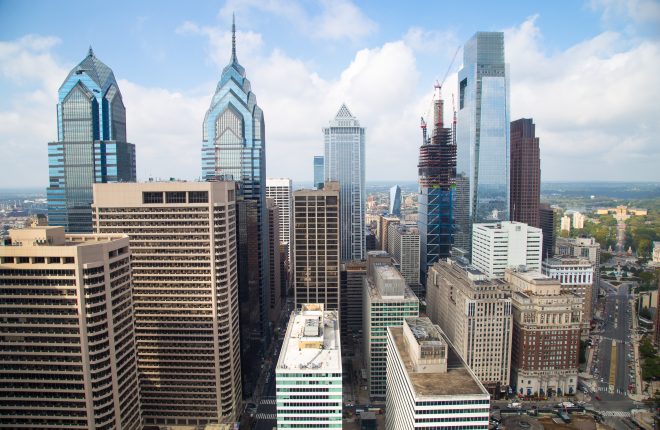The City of Philadelphia is a member of the Racial Equity Here cohort, a national movement of government leaders working to dismantle institutional racism, eliminate racial disparities, and improve outcomes for all.
Philadelphia has committed to acknowledging racial disparities and devising actionable solutions that focus on addressing them in a systemic and transformative manner. In this vein, the City is pleased to announce the completion of their racial equity action plan, which will serve as a blueprint for how the City begins to operationalize their findings from the Racial Equity Here cohort.
Philadelphia has identified four desired results listed below. Each is coupled with community indicators, specific targeted outcomes and actions, a timeline, and performance measures to track progress. The City is excited to take this important step toward aligning the lived reality of people of color with Philadelphia’s racial equity vision statement.
- The City of Philadelphia, through its Rebuilding Community Infrastructure (Rebuild) Initiative, will decrease racial disparities and increase membership and representation of minorities throughout the ranks in the building trades, and will increase equitable attainment of family-sustaining jobs by reducing barriers and increasing career preparedness for all residents of Philadelphia, by addressing the still-present effects of structural and implicit racism and its consequences within marginalized communities.
- The City, through its “City as a Model Employer” strategy, will increase employment opportunity for youth of color by providing career pathways to permanent jobs subject to Civil Service rules and regulations and with city-based employer partners.
- A) The Department of Licenses & Inspections is developing a methodology for analyzing whether its response time to complaints about housing quality and blight relates to the racial composition, concentration of poverty, and overall volume and complexity of the complaints in the communities in which the properties are located. L&I is using the data to inform its efforts to identify the staffing levels and field office locations that will best support fair delivery and quality of service to all communities. B) Communities in the city that are disproportionately impacted by tobacco usage will participate in the design and delivery of tobacco prevention strategies, including the development of policies and practices that reflect the principles of inclusion, cultural competency, and equity in eliminating racial health disparities related to tobacco usage among youth of color.
- City of Philadelphia employees will better understand and have the infrastructure and skills needed to advance racial equity across the breadth (all functions) and depth (up and down hierarchy) of local government operations.
In Philadelphia, historical and present socioeconomic outcomes among residents from diverse racial and ethnic backgrounds demonstrate the still-present effects of structural and implicit racism. Experts have traced the entrenched and deep poverty of Philadelphians, which disproportionately impacts people of color, to several structural factors:
- Permanent deindustrialization and loss of manufacturing jobs during and after the Great Depression;
- Deeply entrenched racial segregation of neighborhoods and concentrated poverty; and
- Inequitable government policies.
To learn more, contact Nefertiri Sickout at Nefertiri.Sickout@Phila.gov.

